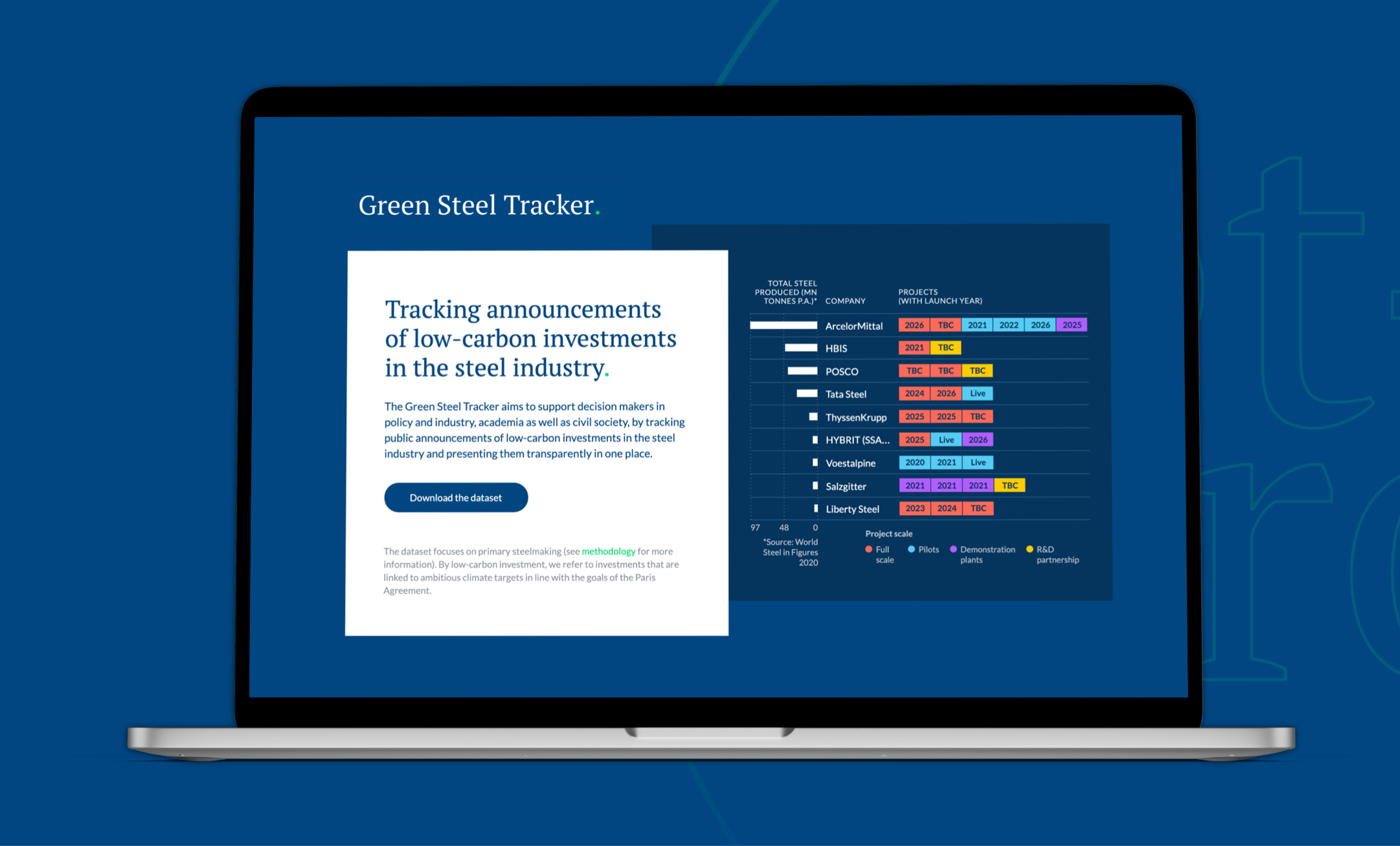New Green Steel Tracker gathers information about low-carbon steel investments.
The new Green Steel Tracker gathers public announcements on low-carbon investments in the steel industry and presents them transparently in one place. Valentin Vogl (Lund University) and Felipe Sanchez (LeadIT) explain.

For the first time, we have a clearer picture of the direction of future steel production.
Felipe Sanchez
LeadIT Secretariat
What prompted the idea to create a database for green steel production?
Valentin Vogl: I was participating in a UK event where there are plans to build a new coal mine to extract coking coal for the steel industry. Many people around the world still believe that it takes coal and blast furnaces to produce steel. That is despite the fact that we are already seeing the first huge investments in different technologies for low-carbon steel production. When I wanted to use these investments as an argument at the UK debate, I noticed that I was lacking robust data sources to back up my argument.
Felipe Sanchez: At the Leadership Group for Industry Transition (LeadIT), we were keen to collaborate with Valentin and a group of like-minded researchers across a number of organizations. The project resonates with our aim of accelerating transition towards low-carbon pathways in line with the Paris Agreement. Tracking investments in green steel also fits nicely with our efforts to provide evidence and knowledge that prompts action on industry transition. In particular, our Industry Transition Tracker and our industry insights.
Who is this database for?
Valentin Vogl: My colleagues and I at Lund University will use the Green Steel Tracker in our research within the HYBRIT RP1 project – a project in partnership with Stockholm Environment Institute (SEI).
Approximately ten other research institutes contribute to the database, and they all find it valuable for their own research purposes. Beyond academia, we hope that the database will inform debates on the future of steel-producing regions, and contribute to dispelling the myth that steel cannot be produced without coal.
Felipe Sanchez: We also see it as a useful tool for policymakers, industry leaders and investors. For the first time we have a clearer picture of the direction of future steel production. Ultimately, data can inform better decision-making – whether it is assessing the right intervention points for R&D policy or questioning whether the business case for investing in carbon-intensive production is built on solid foundations.
What plans do you have to grow and improve the database?
Felipe Sanchez: We aim to update the database regularly to make sure it keeps up with future announcements that we expect to see, given the recent trend in green investments.
In terms of improvements, we will be looking to pull out particular data points to make them more visually engaging. We hope that this will make it easier to spot the interesting stories within the data.
Fact Box
Green technologies for the steel industry are rapidly emerging, and companies make ambitious announcements about low-carbon investments and innovations.
The Green Steel Tracker is a database which reviews these announcements and organizes the information available.
The data may help decision-makers in industry and policy to develop strategies for new technologies and show how fast climate targets can be met in the steel sector.
The database is a collaboration between research and non-governmental organisations, and is hosted by LeadIT.
8%
is about the share of steel production in global carbon emissions.
